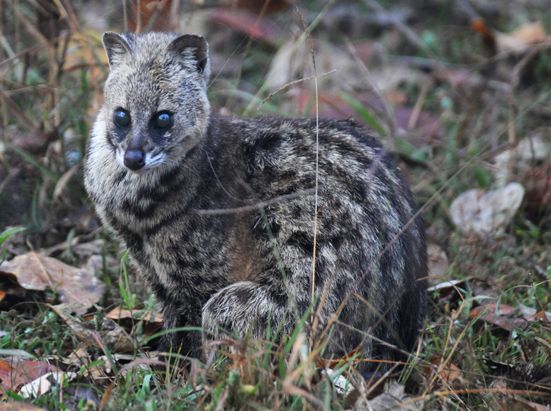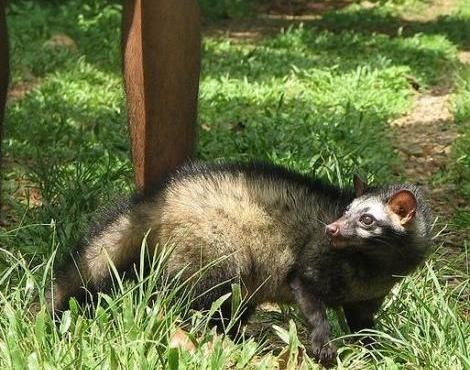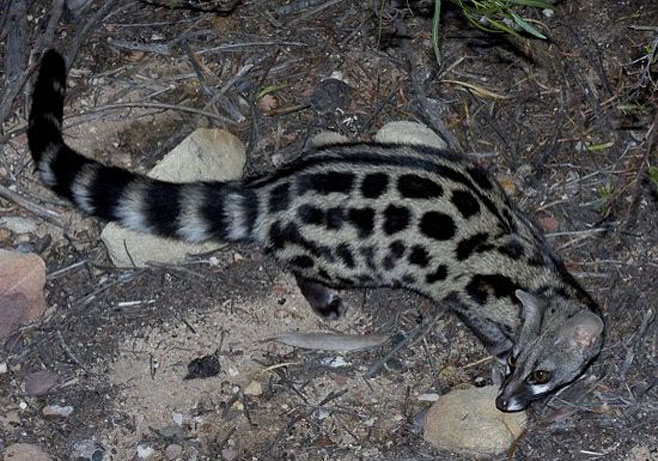Malabar Civet Species Dangerously Low
The related species of the Malabar, the Viverra megaspila which is the other large civet eats predominantly various vegetables, eggs and small animals too. It’s different for the Malabar that you will not find in trees, but only foraging on the ground. But these species will only hunt or forage late and during the daylight you will struggle to find either. The Malabar is then also an aggressive animal which is aggressive even towards members of its own species and finding a group of civets is scarce as these Malabar are loners.
Prior to 1960 the Malabar was common to spot at night in the Travancore and Malabar coastal districts of Southwest India. A decade later though it reached a dangerously low number and nearing extinction. For close to twenty years none were seen, though in 1987 it was spotted again around Calicut on India’s southwest coast, which is 37 miles away from its previous home. Three years later a study and survey showed that small isolated populations only survive still in areas which are undisturbed south of Malabar.



